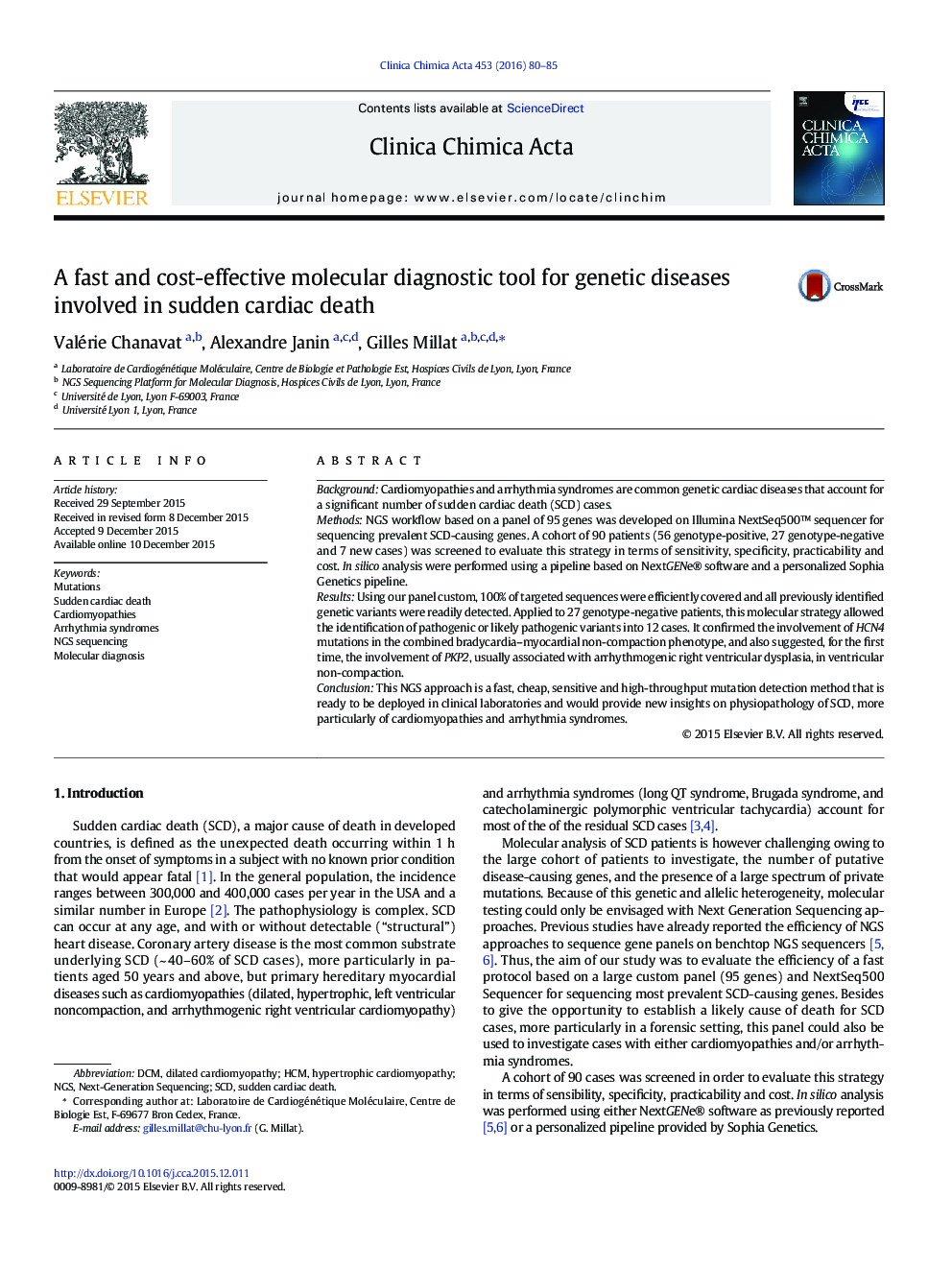| Article ID | Journal | Published Year | Pages | File Type |
|---|---|---|---|---|
| 1965136 | Clinica Chimica Acta | 2016 | 6 Pages |
•Most sudden cardiac deaths have a genetic substratum.•NGS approach is cheap and efficient to identify mutations in sudden cardiac deaths.•In front of myocardial noncompaction phenotype, HCN4 mutations have to be suspected.
BackgroundCardiomyopathies and arrhythmia syndromes are common genetic cardiac diseases that account for a significant number of sudden cardiac death (SCD) cases.MethodsNGS workflow based on a panel of 95 genes was developed on Illumina NextSeq500™ sequencer for sequencing prevalent SCD-causing genes. A cohort of 90 patients (56 genotype-positive, 27 genotype-negative and 7 new cases) was screened to evaluate this strategy in terms of sensitivity, specificity, practicability and cost. In silico analysis were performed using a pipeline based on NextGENe® software and a personalized Sophia Genetics pipeline.ResultsUsing our panel custom, 100% of targeted sequences were efficiently covered and all previously identified genetic variants were readily detected. Applied to 27 genotype-negative patients, this molecular strategy allowed the identification of pathogenic or likely pathogenic variants into 12 cases. It confirmed the involvement of HCN4 mutations in the combined bradycardia–myocardial non-compaction phenotype, and also suggested, for the first time, the involvement of PKP2, usually associated with arrhythmogenic right ventricular dysplasia, in ventricular non-compaction.ConclusionThis NGS approach is a fast, cheap, sensitive and high-throughput mutation detection method that is ready to be deployed in clinical laboratories and would provide new insights on physiopathology of SCD, more particularly of cardiomyopathies and arrhythmia syndromes.
